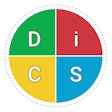
Even if patients delved into the details of their insurance plan when first purchasing coverage, they may still struggle to understand how their dental coverage actually works. Preauthorization, waiting periods, preexisting conditions, annual maximums, lifetime limits -- these can all be difficult to understand, especially for people who haven't previously used dental insurance for restorative care.
Consumers with limited dental insurance experience may not realize that while their insurance plan likely covers the full cost of diagnostic and preventive services, consumers are usually responsible for a portion of the costs when it comes to basic or restorative care.
Dental insurance and the annual coverage cap
As dental professionals, you know many dental insurance plans have an annual limit, called a "cap" or "maximum," typically set at $1,000 to $1,500 annually. While many patients who get regular, preventive care will not exhaust their annual cap, a single dental emergency -- such as one root canal and a crown -- can wipe out a patient's coverage allowance for the year.
Patients may first become aware of their annual cap when reviewing a treatment plan. Comparing the total cost of treatment to the amount their insurance will actually cover can discourage patients from committing to and completing a treatment plan. Be ready with solutions that can help your patients understand all their options and choose the one that best fits their healthcare needs and budget.
Treatment plan completion
You can help your patients access the dental care they need even after their insurance has maxed out by doing the following:
- Align the treatment plan with their insurance coverage and budget. Work with your patients to come up with an extended treatment plan that addresses their most immediate dental needs first, followed by procedures that are less urgent. That may mean devising a treatment plan that extends over several years. Chances are, you already do this, but make sure your patients know it's an option before they see the total cost of their treatment plan.
- Help patients optimize their insurance maximums. If your patients' coverage resets at the beginning of the year and they have not used their annual maximum for 2021, make sure they know that now may be the perfect time to get started on -- or make progress with -- their treatment plan. Help them make the most of their coverage.
- Discuss dental savings plans and other alternatives. Let your patients know what's available to them. Your own in-house payment plan, a dedicated healthcare loan, a short-term loan from a local credit union or bank -- these can all help people pay for treatment after insurance is exhausted. Dental savings plans are another great way to help people complete their treatment plans. These plans typically provide similar cost savings (10%-60%) on procedures as insurance plans, but they are designed for people who need restorative care; there are no annual spending caps, waiting periods, preapproval processes, and restrictions on preexisting conditions. There is no waiting for reimbursements either. Patients pay their dentist directly when they receive care.
Ending the year right -- happy patients, healthy smiles
From a professional and personal standpoint, you want to help your patients get the care they need to reclaim or retain their oral health. You know that dental diseases are increasingly being linked to serious health conditions such as cardiovascular disease, endocarditis, respiratory conditions, certain types of cancer, and, most recently, dementia.
 Jenn Stoll of DentalPlans.com.
Jenn Stoll of DentalPlans.com.It's not easy on you or your team when patients who have finally decided to take charge of their oral health are faced with thousands of dollars in out-of-pocket costs. Their optimism and determination fades, and even if they do manage to complete initial stages of their treatment plan, you may sense that they are about to start skipping appointments and not responding to your staff's calls or emails.
And from a financial standpoint, retaining patients is more cost-effective than a continual cycle of marketing -- often with deep discounts on preventive care procedures -- to attract new patients.
Your outreach efforts to educate patients are key to helping more people get the dental care they need and deserve. I think we can agree that completing treatment plans is the best outcome for everyone.
Jenn Stoll is the chairperson of the Consumer Health Alliance and chief commercial officer of DentalPlans.com, a leading online marketplace for dental savings plans in the U.S. and a Henry Schein One company.
The comments and observations expressed herein do not necessarily reflect the opinions of DrBicuspid.com, nor should they be construed as an endorsement or admonishment of any particular idea, vendor, or organization.



















